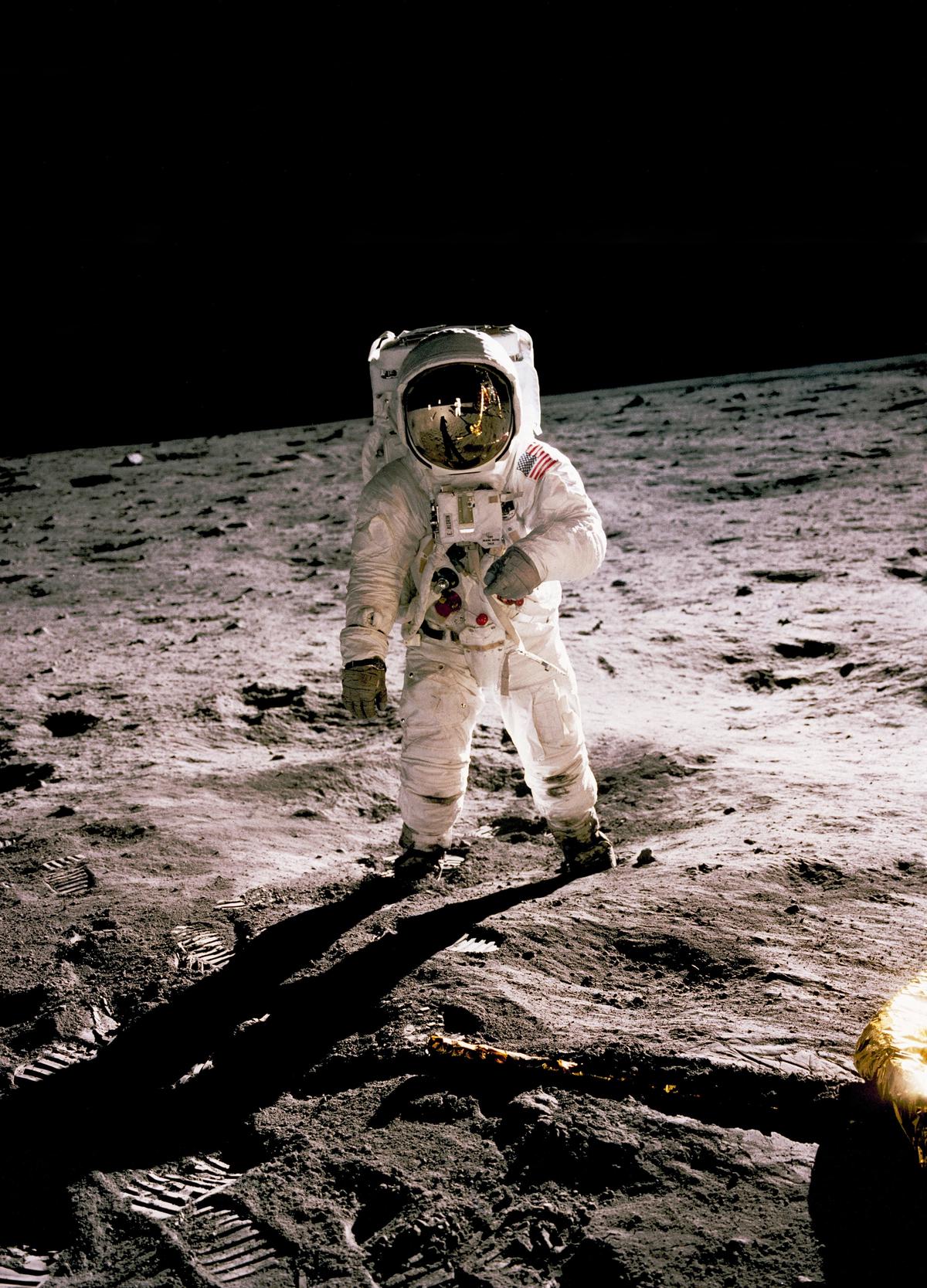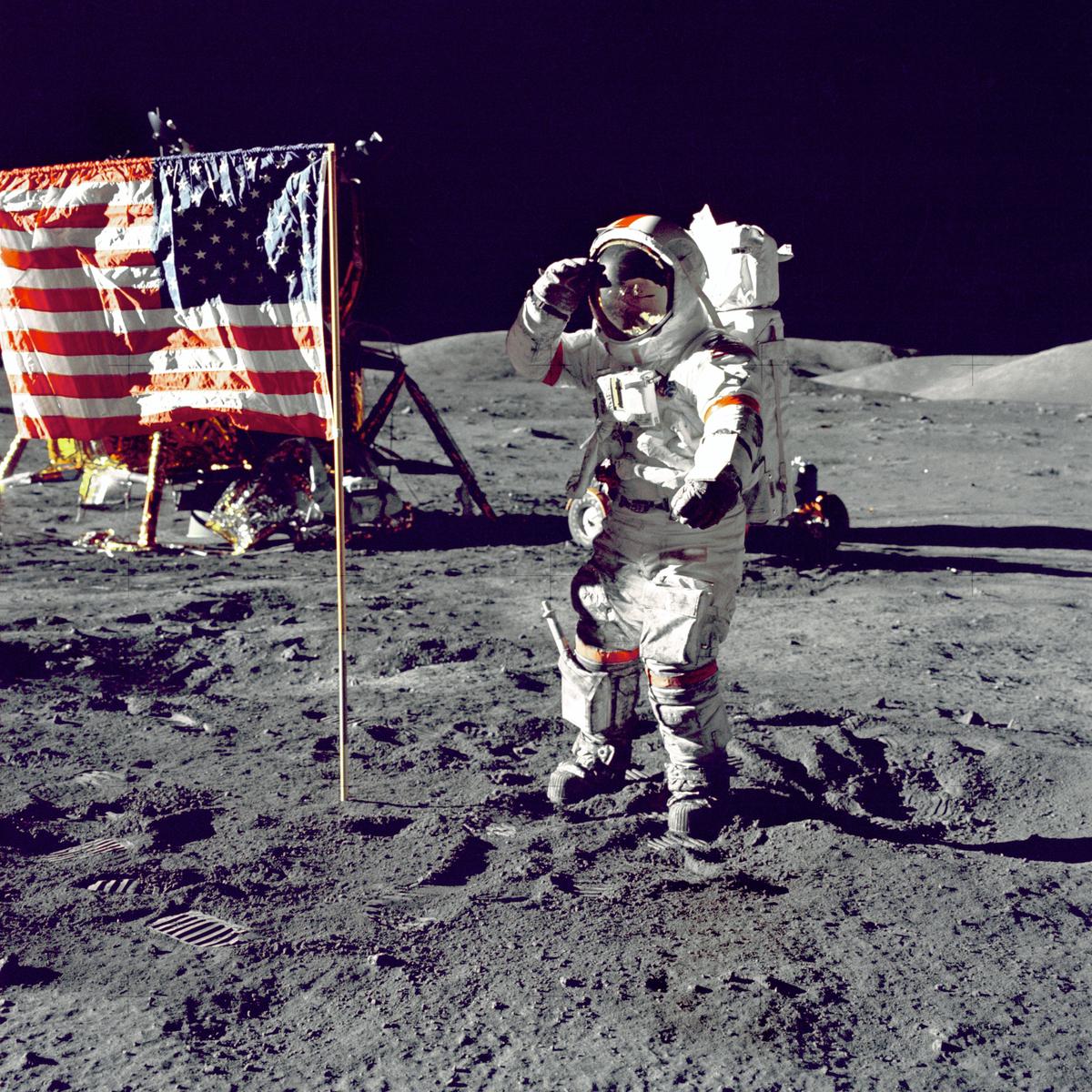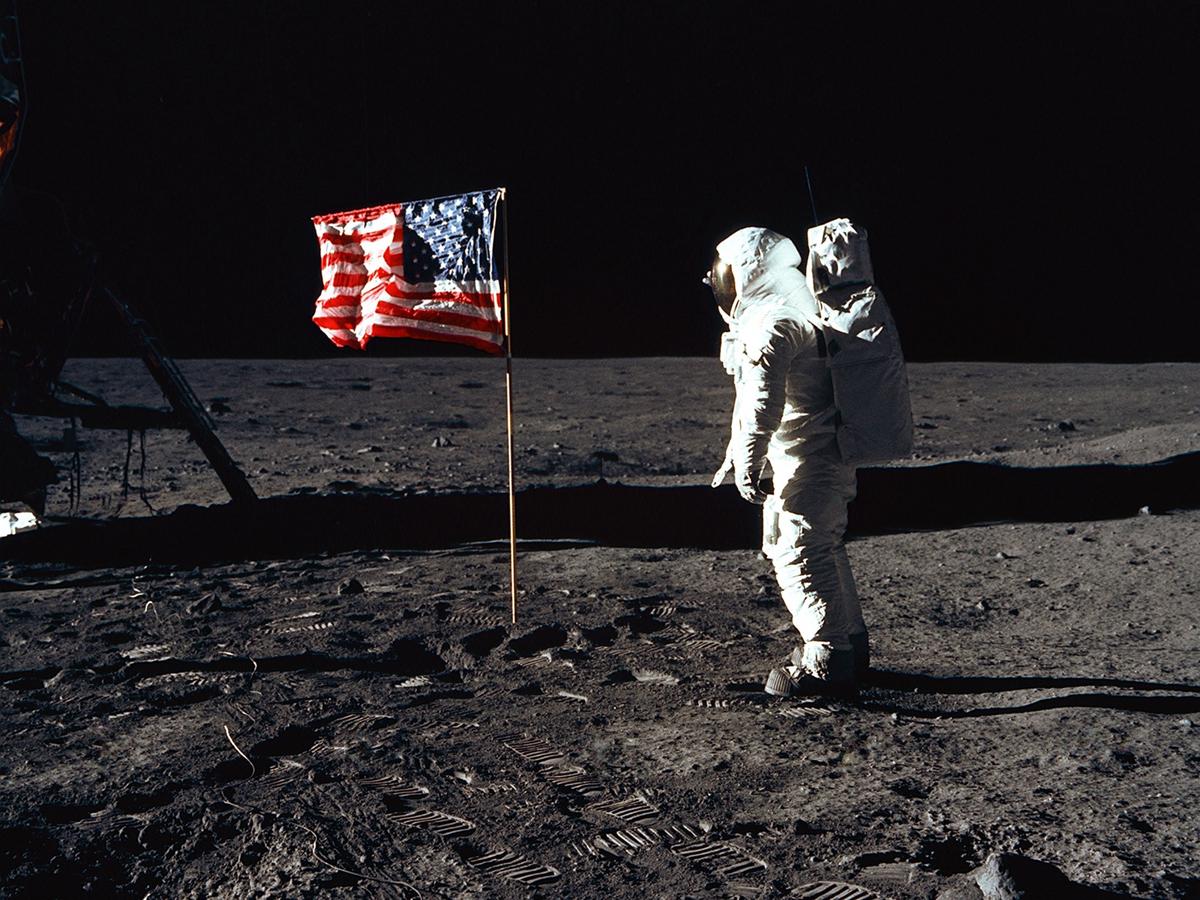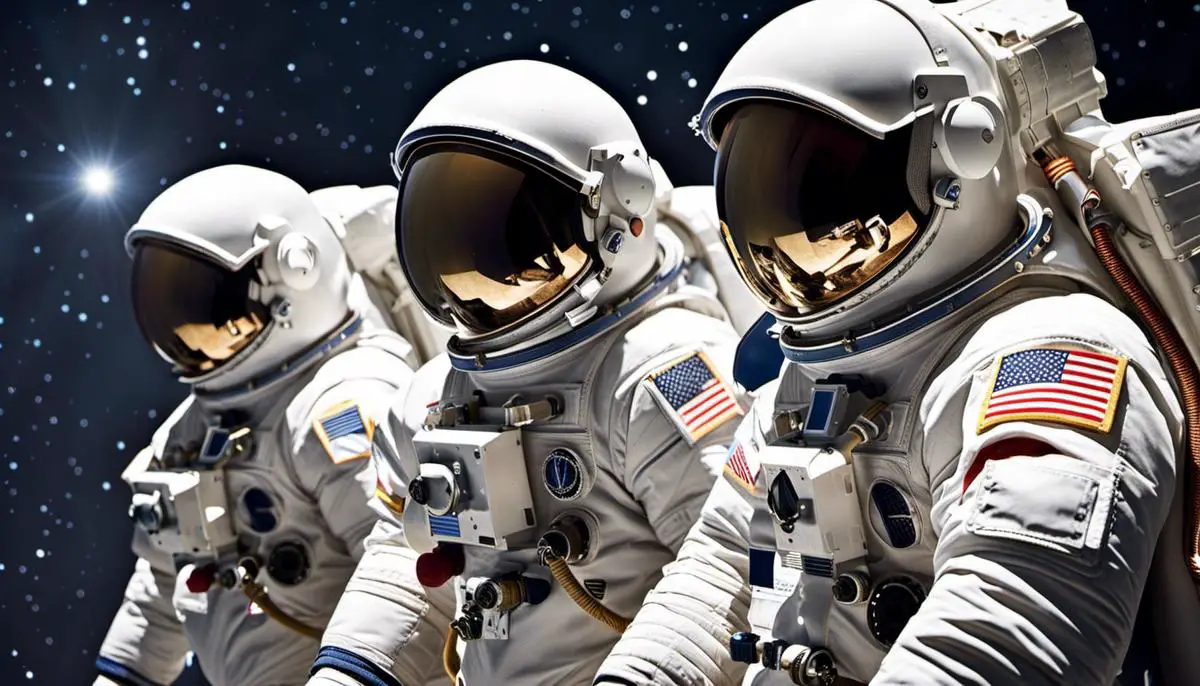Tracing the arc of scientific triumph, the Apollo program stands as a testament to human exploration, courage, and the insatiable desire to push boundaries. This unprecedented initiative marked the culmination of an era marked by intensive competition, rigorous selection and training processes, and daring vision that forever etched twelve names in lunar regolith. Through the lens of the Apollo program, one can grasp the profound symbolism of humanity’s cosmic reach, and the narratives of the astronauts who dared to tread where no man had before. The intricate experience of individual astronauts, the groundbreaking scientific discoveries, and the continuing legacy of these lunar landings form an integral part of our shared history.
Contents
Background of Apollo Program and Astronaut Selection
The Genesis of the Apollo Program
The Apollo program was a monumental undertaking by the National Aeronautics and Space Administration (NASA) designed to land humans on the moon and safely return them to Earth. Initiated in 1961, the program was a direct consequence of the escalating Cold War and the Space Race between the United States and the Soviet Union. President John F. Kennedy made the historic announcement of the ambitious plan on May 25, 1961, in a bid for the United States to take the lead in space exploration.
The Astronaut Selection Process
Out of the vast pool of applicants, NASA had the difficult task of choosing suitable astronauts for the Apollo missions. The selection process was extremely rigorous with a high emphasis on physical fitness, academic qualifications, flight experience, and teamwork skills. The initial stages involved thorough medical and psychological evaluations to ensure the astronauts could endure the harsh and unpredictable conditions of space travel. Later stages incised on the mental strength, determination, and technical acumen of the candidates. Those who excelled in each stage were selected for intensive training.
The Chosen Few and Their Training
The chosen Apollo astronauts were then subjected to a rigorous and comprehensive training regimen to prepare them for the mission ahead. The training aimed to equip them with the diverse skill set required for their lunar voyage, which spanned from survival training to navigating the Lunar Module and conducting lunar surface operations. They also underwent flight simulations to familiarize themselves with possible mission scenarios and developed contingency plans for potential emergencies.
Furthermore, scientific training was a critical component of astronaut preparation. The crew were taught geology so they could identify and collect valuable lunar samples during their moonwalks. They examinationed lunar maps and panoramas to be familiar with the lunar surface.
A Glimpse at the Moonwalkers: The Apollo Astronauts
Spanning across a series of monumental space missions, twelve exceptional astronauts have made their marks on lunar soil as a part of the noteworthy Apollo program. The illustrious list begins with Neil Armstrong and Buzz Aldrin, who embarked on their lunar journey on July 20, 1969, during the Apollo 11 mission. The subsequent moon walkers were Pete Conrad and Alan Bean (Apollo 12), Alan Shepard and Edgar Mitchell (Apollo 14), David Scott and James Irwin (Apollo 15), John Young and Charles Duke (Apollo 16), and Eugene Cernan and Harrison Schmitt (Apollo 17). Each astronaut’s journey not only added to human understanding of the moon and space, but also imprinted their unique experiences on the annals of space exploration.

Photo by siimlukka on Unsplash
Individual Missions and Astronaut Experiences
Breaking Barriers: Armstrong and Aldrin’s Stint with Apollo 11
Singularly distinguished in its own right, the precisely engineered Apollo 11 mission accomplished the staggering feat of placing the first humans on the moon. On that remarkable date of July 20, 1969, our world watched as Neil Armstrong and Buzz Aldrin transform science-fiction into reality. First off their lunar module, Armstrong resonated his formidable step with the words, “one small step for [a] man, one giant leap for mankind.” A symbolic American flag, a heart-rending patch in tribute to the lost Apollo 1 crew, and a universal peace-desiring plaque on the module’s descent stage, declaring “We Came in Peace for All Mankind,” were among the significant mementos they left behind on the moon.
Apollo 12: Precision Landing and Expanded Exploration
The Apollo 12 mission, commanded by Charles ‘Pete’ Conrad, aimed to perform a precision lunar landing, something that Apollo 11 had not achieved. This mission carried out extensive scientific experiments on the lunar surface, including the deployment of the Apollo Lunar Surface Experiments Package (ALSEP), collecting lunar samples and taking photographs.
Apollo 12 was successful in making a pinpoint landing near the Surveyor 3 probe, a vessel that had landed on the moon in 1967. The astronauts later visited the probe, removed some of its equipment to bring back to Earth for analysis, and dispelled the popular belief of a thick layer of lunar dust on the moon’s surface.
Apollo 14: Exploring Fra Mauro
Commanded by Alan Shepard, Apollo 14 aimed to explore the Fra Mauro region, initially targeted by the abortive Apollo 13 mission. Shepard and Edgar Mitchell carried out two extravehicular activities (EVA), collecting larger rocks and deploying a broader set of scientific experiments as part of the Lunar Module (LM).
Challenges during Apollo 14 included difficulties in docking the command and lunar modules, and an issue with the LM’s radar. Shepard, however, made history by hitting two golf balls on the moon’s surface, adding a lighter touch to the intense exploration.
Apollo 15: First Lunar Rover Deployment
Apollo 15, commanded by David Scott, marked a shift to a more scientific focus. It was the first mission to deploy the Lunar Roving Vehicle (LRV), enhancing the operational area for the astronauts. Scott and James Irwin conducted three EVAs, focusing on sample collections and scientific experiments.
A significant discovery was the “Genesis Rock,” a piece of the moon’s primordial crust. This rock provided unprecedented insight into the moon’s composition and history. Despite the successful completion of their mission, Scott, Irwin, and command module pilot Al Worden faced criticism for carrying unauthorized postal covers to the moon, leading to policy changes regarding personal items astronauts could bring to space.
Apollo 16: John Young and Charlie Duke
Apollo 16, commanded by John Young, aimed to explore the Descartes Highlands region of the moon. Young and Charlie Duke spent over 20 hours outside the lunar module, collecting over 200 pounds of samples and driving more than 26 kilometers using the Lunar Roving Vehicle.
However, a malfunction in the command module’s propulsion system almost jeopardized the mission. Despite these challenges, Apollo 16 provided invaluable information about the moon’s highlands.
Apollo 17: The Final Exploratory Journey
The conclusive journey of the moon missions, Apollo 17, was remarkable not just for its finality but also for the introduction of the pioneer scientist-astronaut, Jack Schmitt. Commanded by Eugene Cernan, it was this mission that carried out the most comprehensive exploration of the lunar surface yet, venturing over 35 kilometers, spending more than 22 exhausting hours outside the Lunar Module, and collecting an impressive 110 kilos of samples for analysis back on Earth.
Perhaps the most striking result of their diligent collection was the discovery of soil of an unusual orange hue near the Shorty crater. This peculiarity was found to house minute beads of volcanic glass, a remarkable discovery that underscored the value of their mission. Though Apollo 17 marked the end of an era in moon explorations, the crew left an enduring promise echoed in the words inscribed on a lunar plaque: “Here Man completed his first explorations of the Moon, December 1972 A.D. May the spirit of peace in which we came be reflected in the lives of all mankind.”

Photo by historyhd on Unsplash
The Scientific Discoveries and Contributions
The Integral Role of the Apollo Lunar Surface Experiments Package (ALSEP)
The Apollo Lunar Surface Experiments Package, more commonly known as ALSEP, was a crucial collection of scientific experiments and instruments which were deployed by Apollo astronauts during their Moon missions. Each expedition, from Apollo 12 through Apollo 17, transported distinct instruments designed with specific scientific targets in mind. The beauty of these experiments lay in their autonomy, operating and collecting valuable data long after the astronauts had vacated the lunar surface. With information ranging from seismology, heat flow, and magnetic fields to ionospheric, atmospheric, and solar wind data, ALSEP has made invaluable contributions to the evolution of lunar science and our comprehension of Earth’s only natural satellite.
Lunar Rock and Soil Samples
One of the most notable contributions of the Apollo missions was the collection and return of lunar rock and soil samples. The astronauts involved in these missions collected about 842 pounds (382 kilograms) of lunar material, providing scientists with invaluable data about the moon’s geology, history, and composition. These samples not only confirmed that the moon is geologically active but also contributed to theories about the formation of the moon, particularly the giant impact hypothesis.
Lunar Laser Ranging Experiment
One key experiment, the Lunar Laser Ranging experiment, was set up by the Apollo 11, 14, and 15 missions and it is still in use today. The device consists of a series of corner-cube retroreflectors, which are essentially mirrors that reflect incoming light directly back towards its source. By firing lasers from Earth at these retroreflectors and measuring the time it takes for the light to return, scientists can calculate the distance between the Earth and Moon with extreme accuracy. This experiment has provided data confirming the presence of the liquid outer core of the Earth, and it continually provides precise measurements of the Moon’s distance from Earth.
Discovery of Water on Moon
The samples collected during the Apollo missions also contributed to one of the most significant recent discoveries about the moon: the presence of water. Analysis of the lunar rocks brought back by Apollo astronauts indicated that the moon’s interior may contain substantial amounts of water. These findings, made decades after the completion of the Apollo missions, have critical implications for future lunar exploration and the possibility of establishing a sustainable human presence on the moon.
Insights into Cosmic Rays and Solar Wind
The Apollo missions also provided unprecedented insights into cosmic rays and solar wind. Apollo astronauts installed several experiments on the moon’s surface to measure and analyze these phenomena. The results have greatly contributed to our understanding of the Sun’s activity and its impacts on space weather, which affects satellite operations and communications on Earth.
Apollo Missions: A Crucible of Scientific Discoveries
Remarkable strides in our comprehension of the moon, Earth, and the broader solar system can be credited to the unprecedented explorations of the Apollo astronauts who walked on the moon. These trailblazers not only ventured into hitherto unknown territories but also collected invaluable data that has furthered our knowledge of celestial bodies. This information continues to guide contemporary efforts in space exploration and remains a cornerstone of our current understanding in planetary science.

The Impact and Legacy of Moon Landings
Offshoots of the Apollo Program: Technological Leapfrogs
Aside from direct scientific insights, the Apollo program spawned numerous technological leaps that are integral to the modern world. For instance, the pioneering use of integrated circuits in the Apollo Guidance Computer (AGC) laid the groundwork for the digital control systems we use today. This miniaturized electronic circuit, the fundamental building block of microprocessors, has been instrumental in the creation of personal computers, smartphones, and countless other digital devices.
Far beyond space technology, the influence of integrated circuits permeates different sectors, including communication systems, medical equipment, and home appliances, underscoring the expansive societal footprint left by the Apollo missions. Innovations such as memory foam, cordless power tools, nutrition bars, and advanced water purification systems can also be traced back to the ingenuity propelled by these momentous moon landings.
Influence on Cold War Dynamics
The Apollo Moon landings significantly influenced Cold War dynamics between the United States and then Soviet Union. Neil Armstrong and Buzz Aldrin’s historic lunar landing in July 1969 was a defining moment in the Space Race, a facet of the Cold War where both superpowers sought to demonstrate their superior technological abilities and ideological systems. This achievement symbolically represented the United States’ victory in the space race, generating national pride alongside fostering a sense of unity within the country and inflicting a psychological blow to the Soviet Union.
The Apollo Program also sparked the way for the subsequent collaboration between the two superpowers in space exploration. This led to Apollo-Soyuz in 1975, a joint space mission between America and Russia that became symbolic of the thawing of Cold War tensions.
Enduring Impact on Society and Culture
The Apollo program, particularly the first moon landing, had a profound impact on society and culture. The world collectively held its breath on July 20, 1969, as Neil Armstrong took his first step on the moon. The iconic phrase, “That’s one small step for man, one giant leap for mankind,” has been imprinted in common parlance and reflected the collective enthusiasm for human achievement and the boundless possibilities of humanity.
These missions also contributed to the rise of science fiction culture centered around space exploration, as seen in both literature and cinema, and inspired countless people to pursue careers in Science, Technology, Engineering, and Mathematics (STEM) fields.
Inspiration for Future Exploration
The Apollo astronauts not just left their footprints on the moon but also an enduring legacy of inspiration for future space exploration. Since the last Apollo mission in December 1972, subsequent explorations have focused on unmanned missions and low-earth orbit activities like the International Space Station. Still, the vision of landing humans on Mars and even colonizing it, owes much to the daring Apollo missions that demonstrated the feasibility and potential of manned space explorations.
Lasting Legacy
In sum, the Apollo moon landings have left a lasting legacy encompassing a breadth of areas from technology to culture, geopolitics, and future space exploration. The footprints left by the Apollo astronauts on the moon serve as enduring reminders of human capability and potential when driven by ambition, innovation, and ingenuity.

As the lunar dust settles on the footprints of the Apollo astronauts, the echoes of their journey continue to reverberate within the corridors of science, culture, and society. The trajectories traced by these moonwalkers, their individual experiences and the vast scientific data they gathered, have acted as springboards propelling us further into our understanding of the lunar landscape and beyond. The impact of the moon landings reaches far beyond the confines of space exploration, influencing technological advancements, shifting geopolitical dynamics, and shaping our collective sense of identity and possibility. As we gaze at the night sky, the moon bears silent witness to those leaps of mankind, an enduring tribute to the power of exploration and thirst for discovery.
